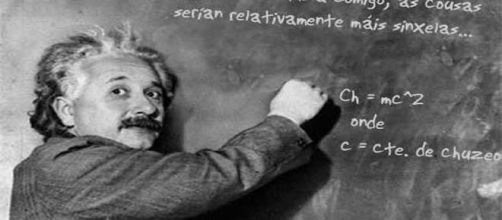One hundred years ago today, Albert Einstein came up with the famous Einstein’s theory of general relativity, and from then on out the whole world changed in the land of physics. Einstein’s theory and its resulting equation was to change how we understood time, space and matter. It gave man a way to discover and awe at the universe via items like black holes, the Big Bang, time machines, wormholes, space travel and even our modern global positioning devices all apply in some way to his famous equation.
In the equation, the equal sign divides the sides, and the characters on the left define the flow of time and the geometry of space; while the Tmn on the right defines how energy and matter are dispersed in space, whether they are moving or not.
That equation looks like this: Rmn- ½ gmnR = 8pG Tmn.
Meaning of Einstein’s theory of general relativity
In laymen’s terms, what this means is that the equation relates to the geometry of space and the flow of time — now flexible amounts, responsive to alterations — to the dissemination of matter into space. Space tells matter how to move and matter tells space how to curve, as the physicist John Archibald Wheeler once said. This is the core of Einstein's general relativity theory.
Einstein was certain his theory was correct. When asked by a reporter what he would think if his theory was incorrect. He stated that he would feel sorry for the good Lord because the theory is correct. And it has been verified and proved to be a very accurate theory.
However, there are many questions that surround it, so our knowledge of this theory is not complete.
Einstein also launched quantum mechanics
Einstein also worked hard on launching the field of quantum mechanics, even though he is more famous for Einstein’s theory of relativity. Quantum mechanics is what describes how physics works on the smallest scale in such tiny items like atoms and the protons and neutrons that make them up.
Quantum mechanics says that an atom’s state can be interrelated with another atom's state, even if that atom is far away from the first one. Einstein himself didn't like that due to the fact that it appeared to suggest that interactions could happen over events that couldn’t be linked by a beam of light, which would break the scientific rule that states that you can’t go faster than the speed of light.
Einstein believed that wasn’t possible and thereby considered the theory incomplete, however, experimental evidence has since proved that to be wrong.
So, one hundred years have passed since Einstein’s theory of general relativity was launched and scientists all over the world are thankful for this great scientist’s discovery.

